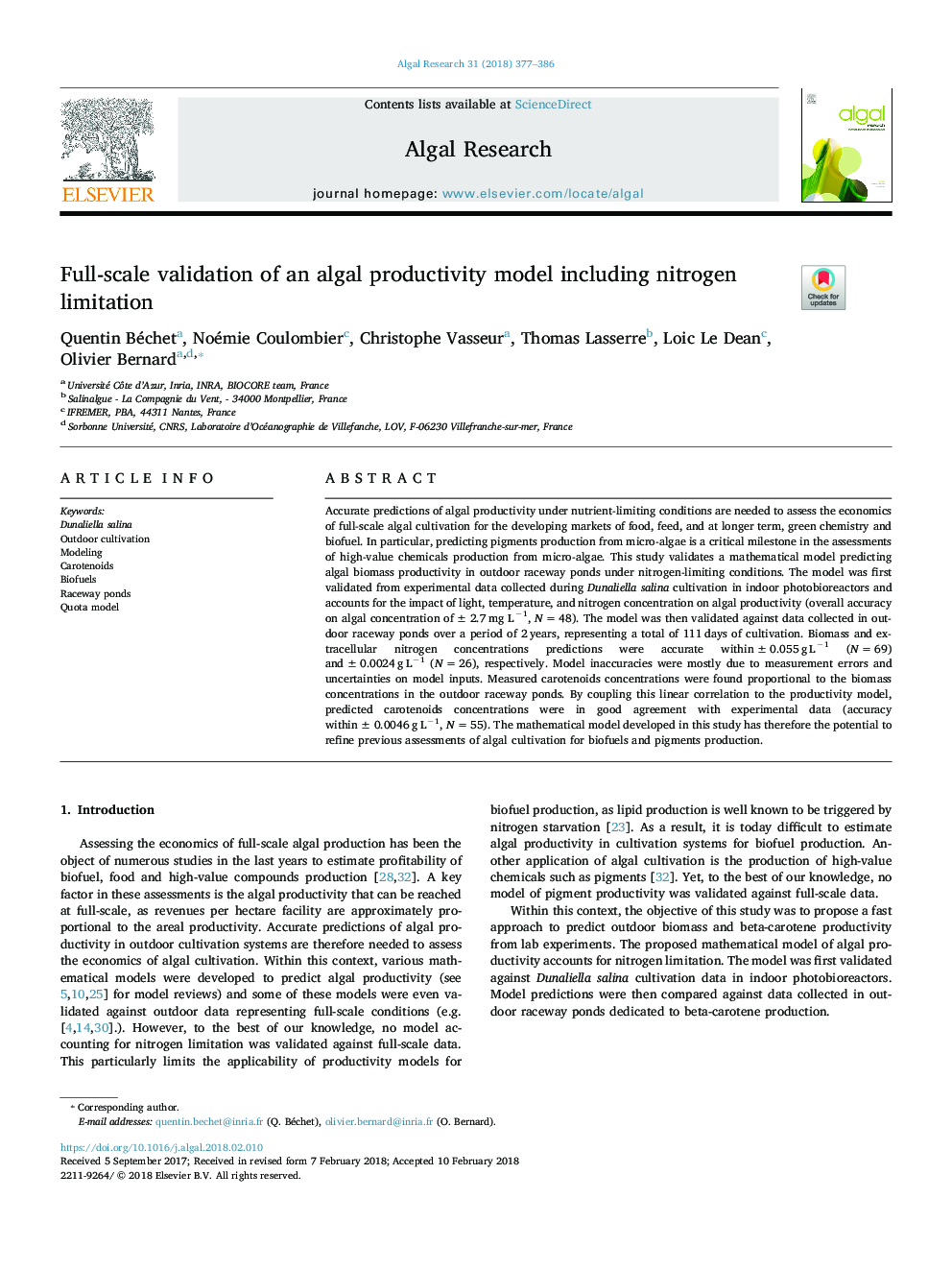| Article ID | Journal | Published Year | Pages | File Type |
|---|---|---|---|---|
| 8086078 | Algal Research | 2018 | 10 Pages |
Abstract
Accurate predictions of algal productivity under nutrient-limiting conditions are needed to assess the economics of full-scale algal cultivation for the developing markets of food, feed, and at longer term, green chemistry and biofuel. In particular, predicting pigments production from micro-algae is a critical milestone in the assessments of high-value chemicals production from micro-algae. This study validates a mathematical model predicting algal biomass productivity in outdoor raceway ponds under nitrogen-limiting conditions. The model was first validated from experimental data collected during Dunaliella salina cultivation in indoor photobioreactors and accounts for the impact of light, temperature, and nitrogen concentration on algal productivity (overall accuracy on algal concentration of ±2.7â¯mg Lâ1, Nâ¯=â¯48). The model was then validated against data collected in outdoor raceway ponds over a period of 2â¯years, representing a total of 111â¯days of cultivation. Biomass and extracellular nitrogen concentrations predictions were accurate within ±0.055â¯gâ¯Lâ1 (Nâ¯=â¯69) and ±0.0024â¯gâ¯Lâ1 (Nâ¯=â¯26), respectively. Model inaccuracies were mostly due to measurement errors and uncertainties on model inputs. Measured carotenoids concentrations were found proportional to the biomass concentrations in the outdoor raceway ponds. By coupling this linear correlation to the productivity model, predicted carotenoids concentrations were in good agreement with experimental data (accuracy within ±0.0046â¯gâ¯Lâ1, Nâ¯=â¯55). The mathematical model developed in this study has therefore the potential to refine previous assessments of algal cultivation for biofuels and pigments production.
Related Topics
Physical Sciences and Engineering
Energy
Renewable Energy, Sustainability and the Environment
Authors
Quentin Béchet, Noémie Coulombier, Christophe Vasseur, Thomas Lasserre, Loic Le Dean, Olivier Bernard,
